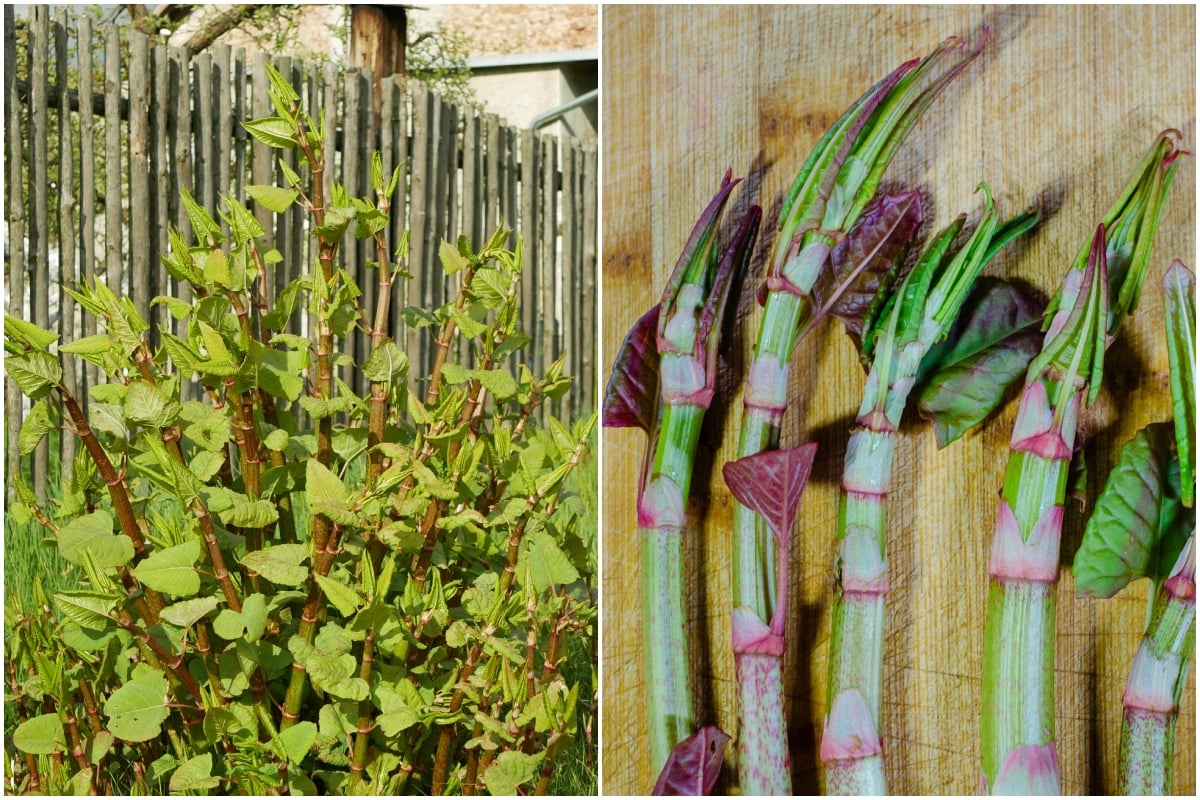
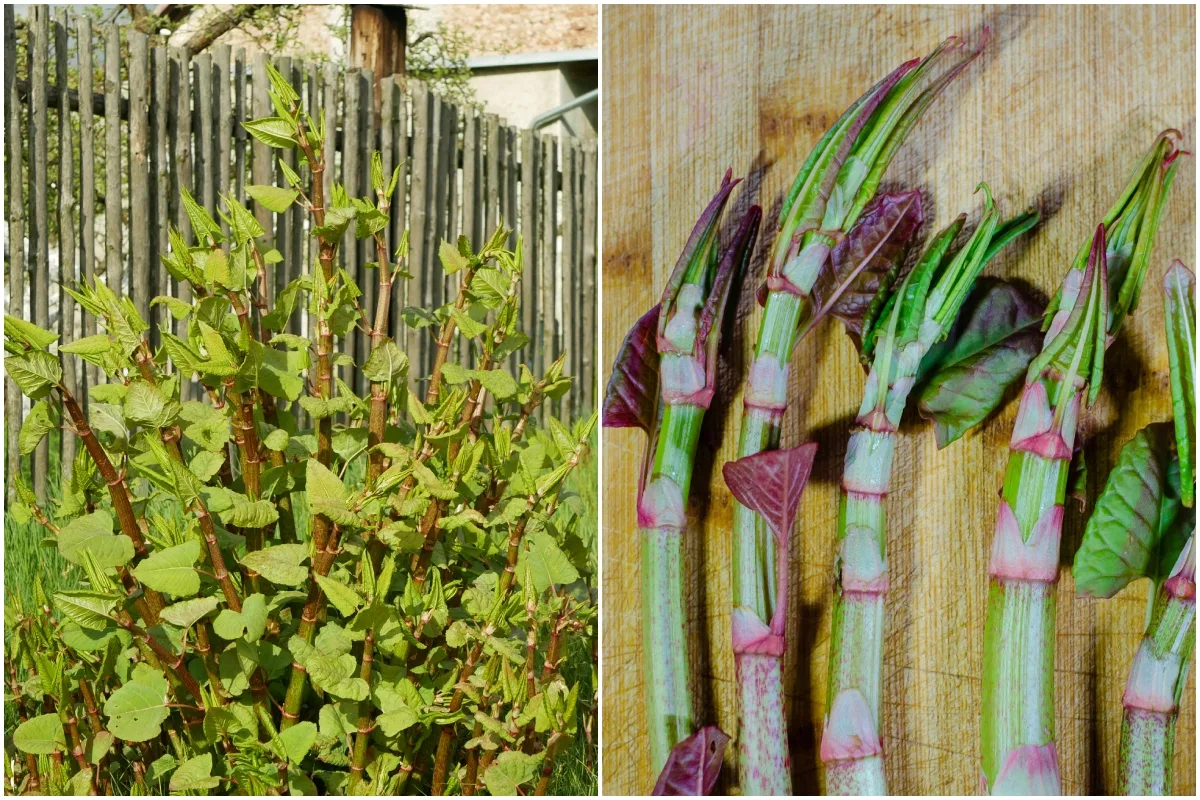
As any seasoned weed-puller is aware of, conserving on high of weedy development within the garden and backyard is a endless grind. Some weeds are simple, yank them up as soon as they usually’re gone. Others are extra cussed, requiring a cardboard smothering to be rid of them for good.
You ain’t seen nothing till you’ve gone toe-to-toe with Japanese knotweed.
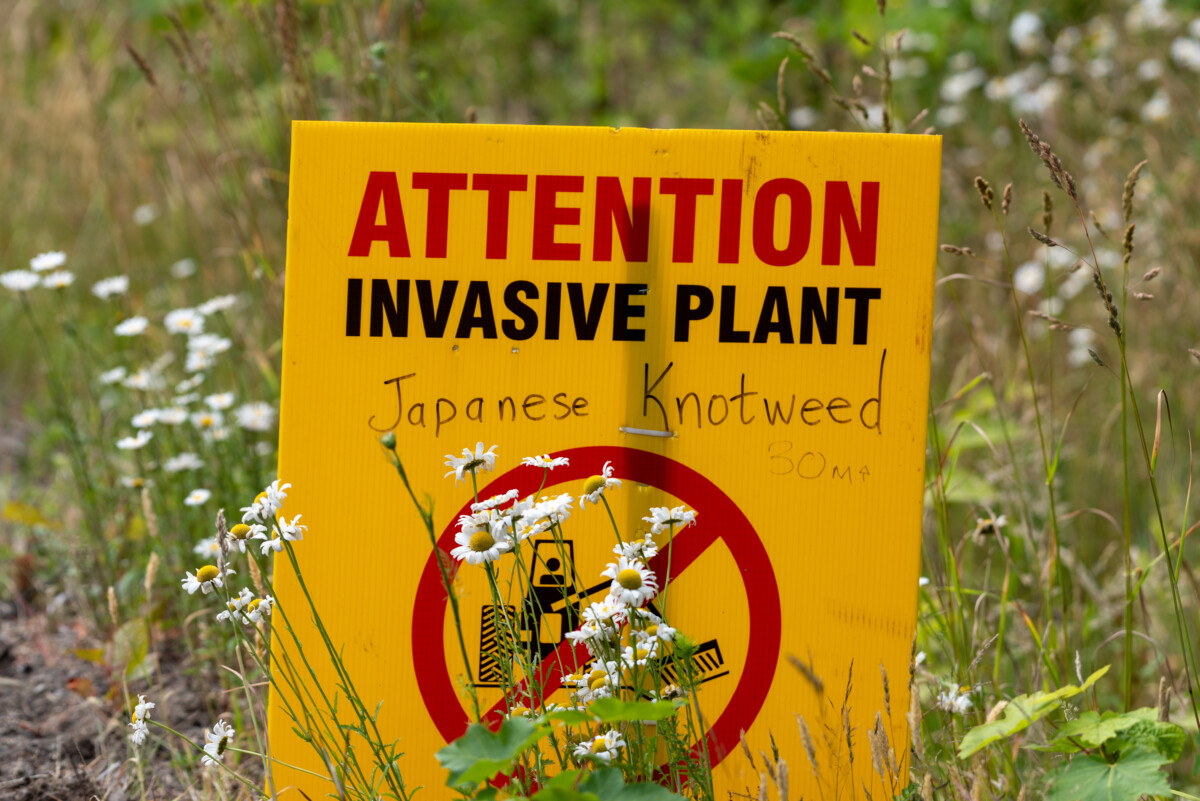
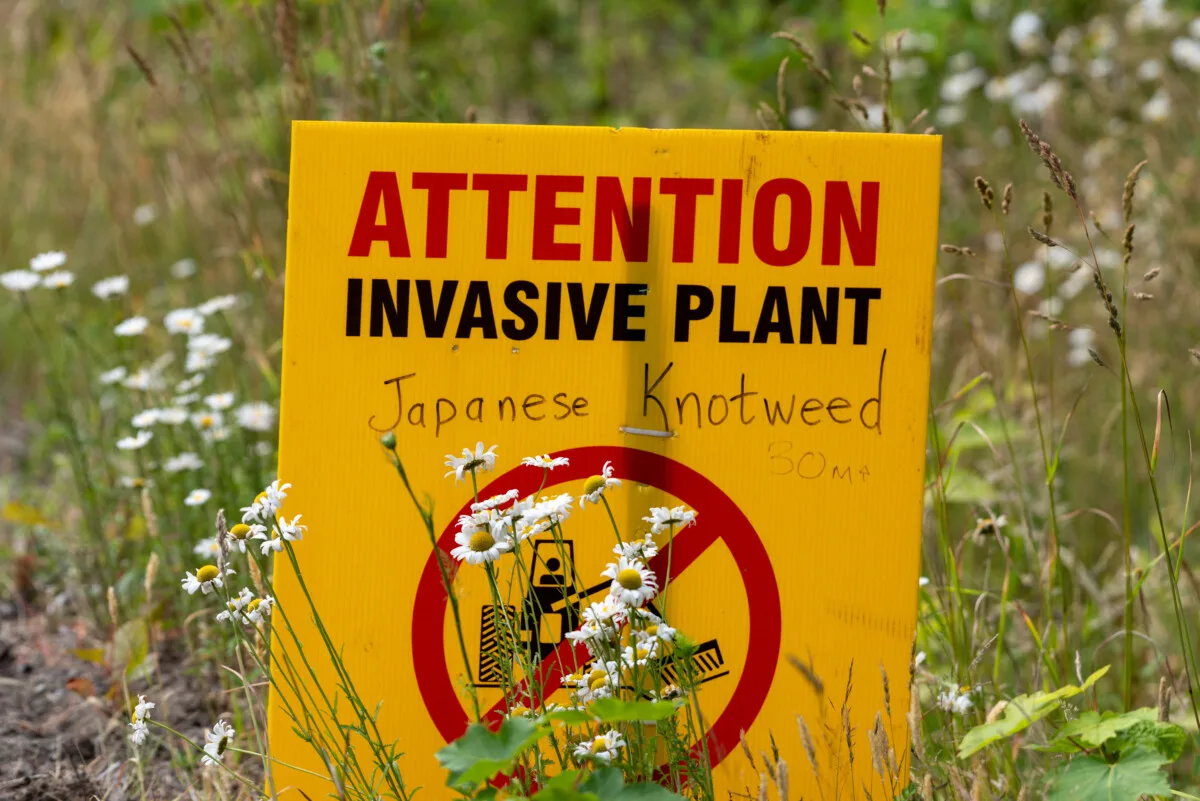
For 4 years, I fought the great battle towards Japanese knotweed…and misplaced. The most effective I might do was beat it again and reduce its presence in my previous yard.
I pulled the younger sprouts as quickly as they popped up – randomly and prolifically – within the grass, alongside the fence, beneath the deck stairs, and in between my rows of tomatoes. Older shoots emerge in clumps and I spent untold hours digging out the knotty plenty of roots – simpler stated than finished, as these infants are entrenched.
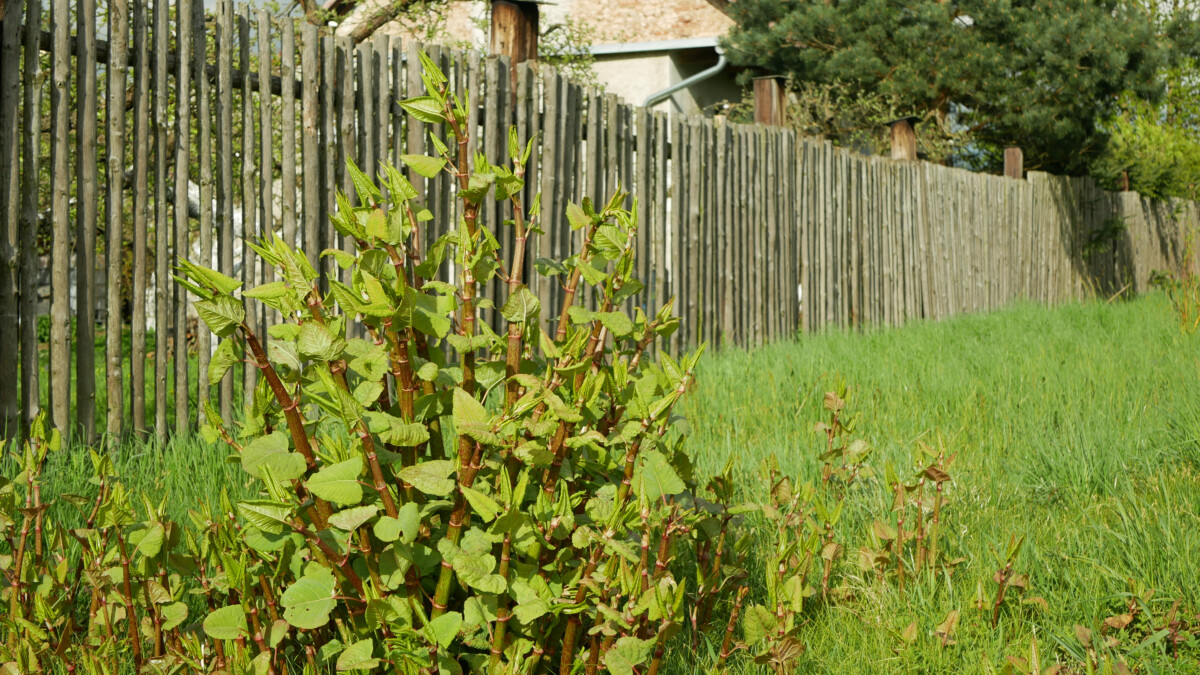
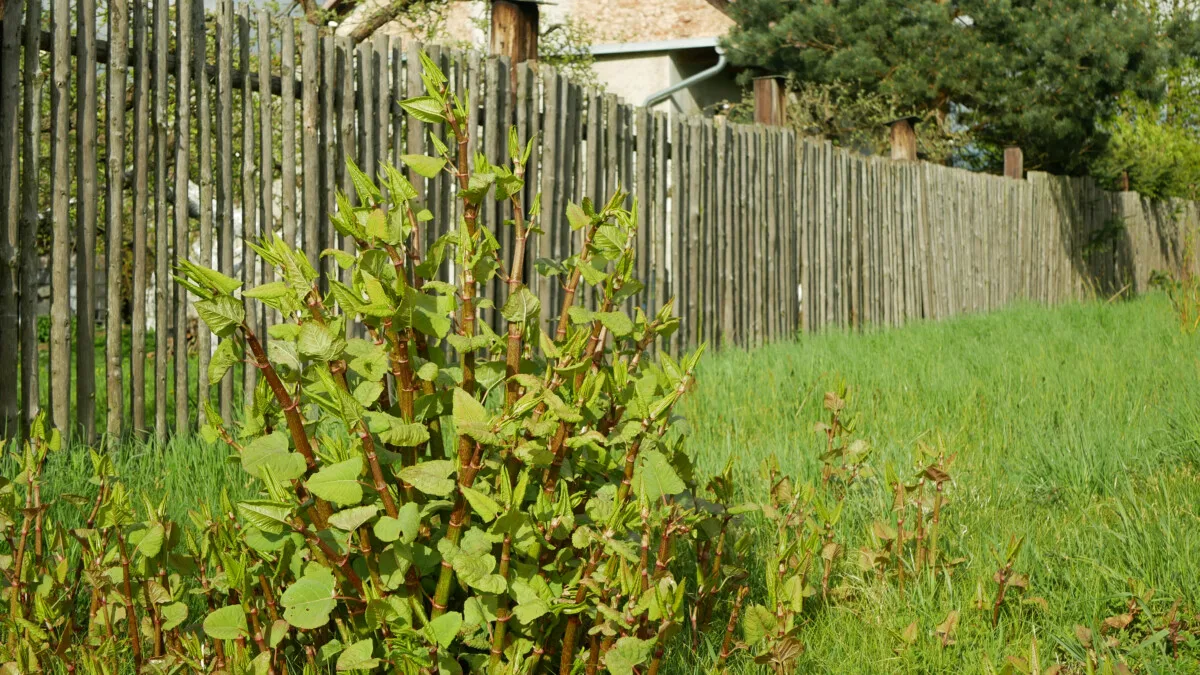
I used extreme quantities of boiling water to drench their root techniques and rising websites.
Nonetheless, Japanese knotweed endured.
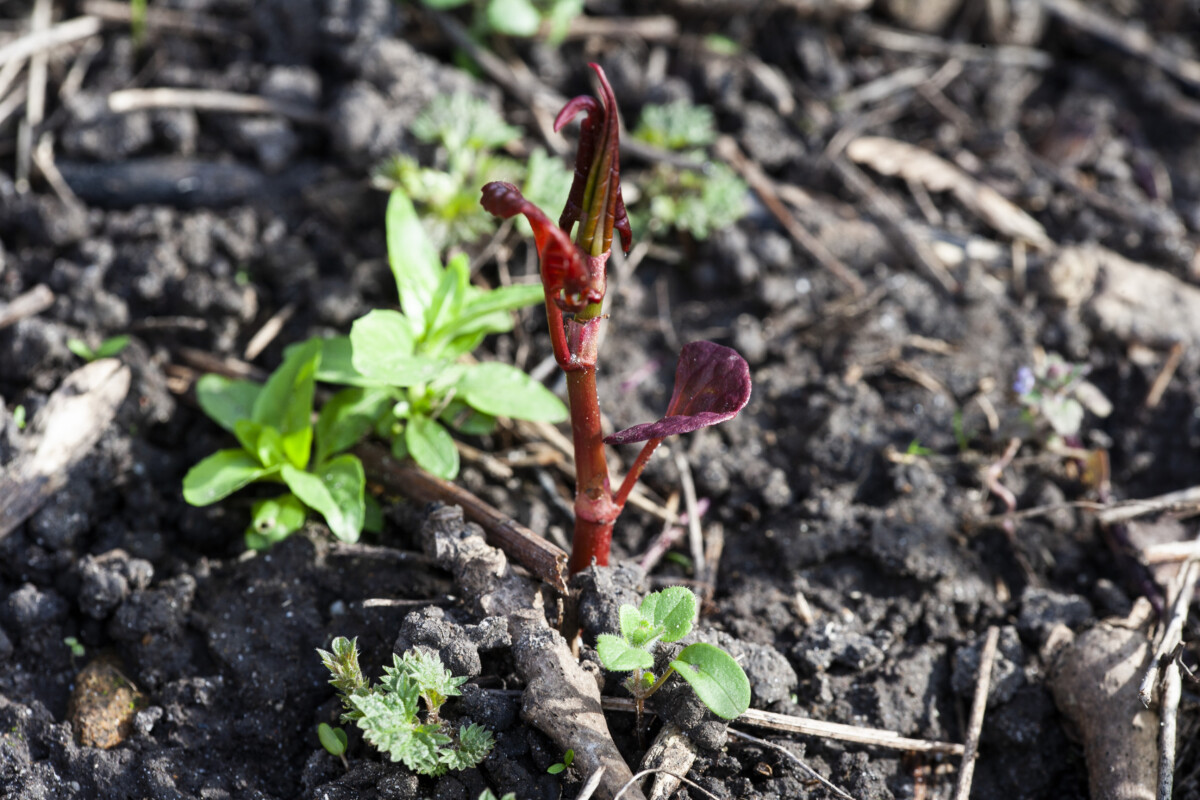
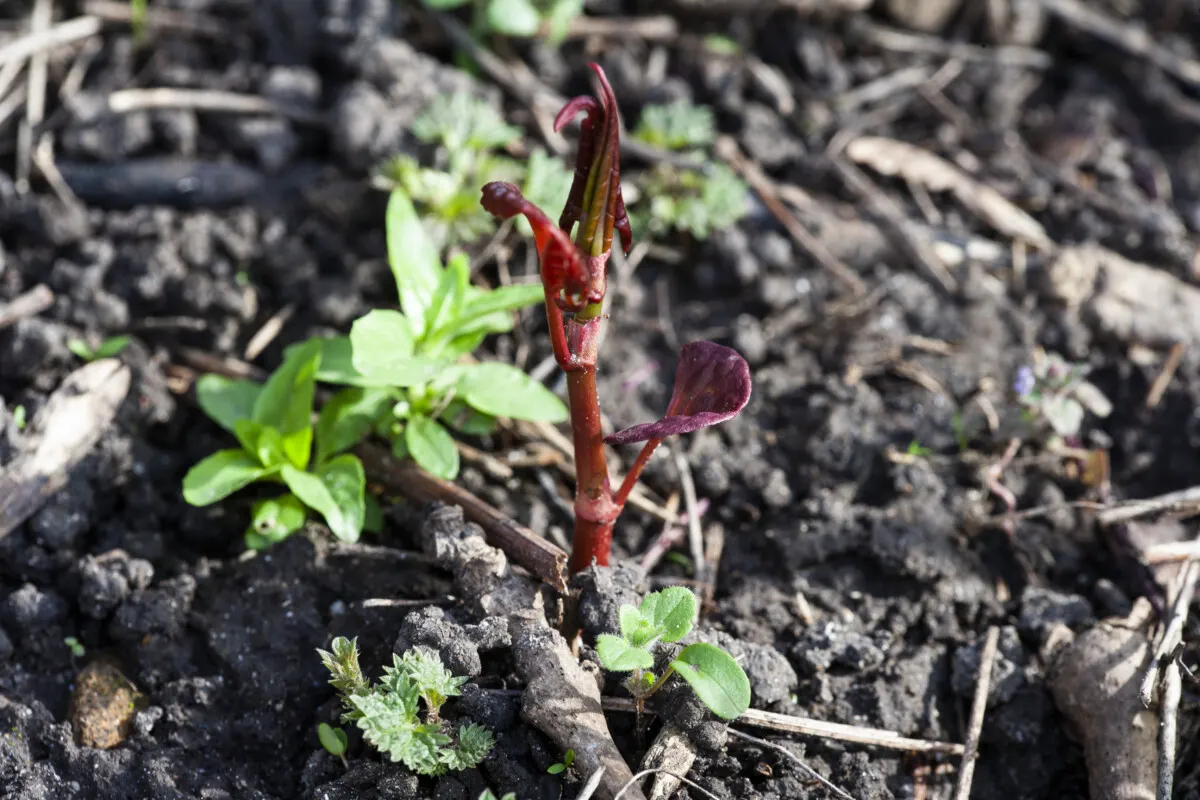
Japanese knotweed is actually essentially the most tenacious of weeds. You possibly can sluggish it down, you possibly can weaken it, you possibly can curb its unfold. However eliminate it perpetually? Subsequent to not possible.
Japanese Knotweed – the Hardy Plant with Staying Energy
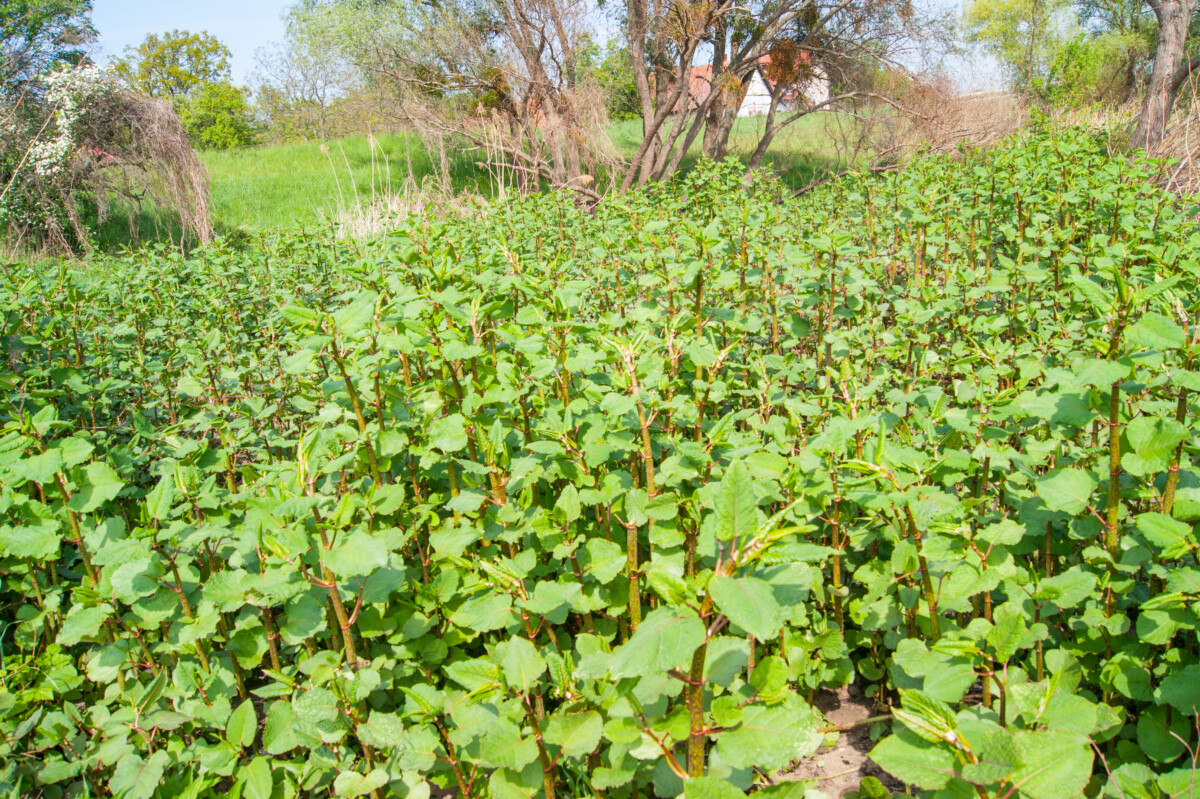
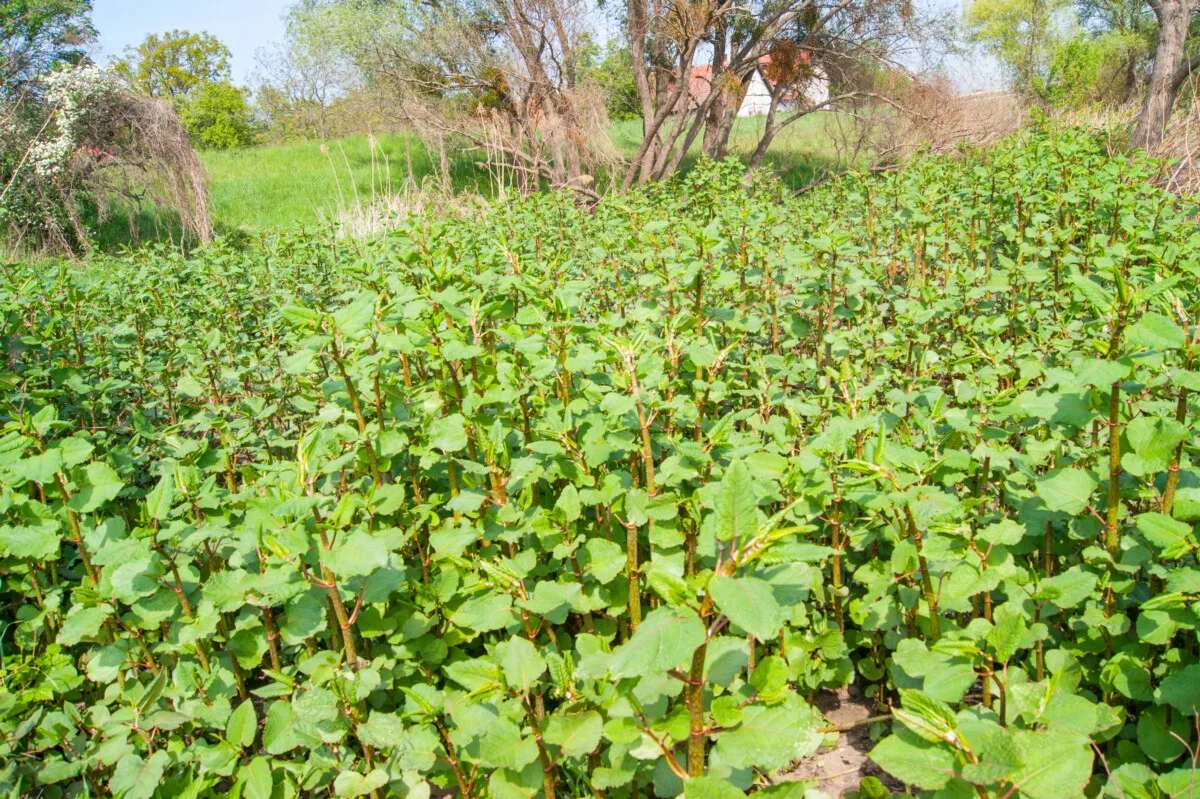
Japanese knotweed (Fallopia japonica) is a perennial herbaceous plant within the buckwheat household. In its native vary of japanese Asia, it’s a ruderal species that’s one of many first vegetation to develop after a significant land disturbance. In Japan, it springs up on lava fields and between rock fragments left on the base of mountainous slopes after a volcanic eruption.
The aspect of a volcano might be one of the vital hostile locations for a plant to be. There it might want to stand as much as landslides and flooding, having its foliage repeatedly coated in volcanic ash, and be able to thriving within the poorest high quality soils beneath droughty situations. Due to these variations, Japanese knotweed is an absolute beast when it grows in rather more favorable settings.
In its homeland, it’s stored in verify by different vigorous growers like bamboo and silvergrass that compete for house. It additionally has its very personal specialised leaping lice predator – the Japanese knotweed psyllid – that defoliates the plant and depletes its vitality for development and rooting.
Exterior of the checks and balances of its native habitat, Japanese knotweed ranks as one of many most invasive species in the world.
Bringing Japanese knotweed to Europe, what might probably go improper?
We’ve one particular person guilty for the scourge of Japanese knotweed: Phillip Franz von Siebold, a German doctor, botanist, and explorer.
Arriving in Japan in 1823, von Siebold collected and shipped round 2,000 plant species to Europe over his 8-year keep. To be truthful to ol’ Phillip Franz, he despatched off many specimens nonetheless prized in gardens at the moment, together with maple and cherry blossom timber, hosta, hydrangea, wisteria, iris, clematis, and peony.
Little did he know that when he scooped up a pattern of Japanese knotweed from Mount Unzen in Nagasaki Prefecture, he could be unleashing the ire of gardeners throughout a number of generations, the world over.
Japanese knotweed turned commercially accessible in Europe in 1848 after receiving a gold medal for the “most fascinating new decorative plant” by the Society of Agriculture & Horticulture at Utrecht. Boasting its nice vigor, magnificence, and medicinal makes use of, it was marketed as a windbreak, nourishing animal fodder, and fixer of eroding soil. An unique plant with such traits was very interesting to the Victorian gardener, fetching 20 occasions the value as wisteria.
The primary rumblings that Japanese knotweed was nothing however bother got here in 1899, when growers started noting its weediness and unfold. By the point the Nineteen Thirties rolled round, it was given the title “Hancock’s Curse” after a plant proprietor in Britain.
However the genie was nicely out of the bottle at that time. Japanese knotweed had escaped cultivation and gone on to ascertain itself all through Europe, Australia, New Zealand, most of Canada, and in 42 of fifty US States.
How Japanese Knotweed is the Good Invader
The evolutionary coaching that Japanese knotweed acquired on the volcanic plains has ensured this plant is actually robust to kill.
Although it grows most vigorously in full solar, it will probably face up to deep shade as nicely. It has no challenge flourishing in quite a lot of soils, and it appears the poorer the higher. Preferring wetlands and different moist milieus, Japanese knotweed isn’t in any respect phased by acidity, salinity, or soils contaminated with heavy metals and pollution. It’s drought and warmth resistant too, and the roots can survive temperatures as little as -31°F (-35°C).
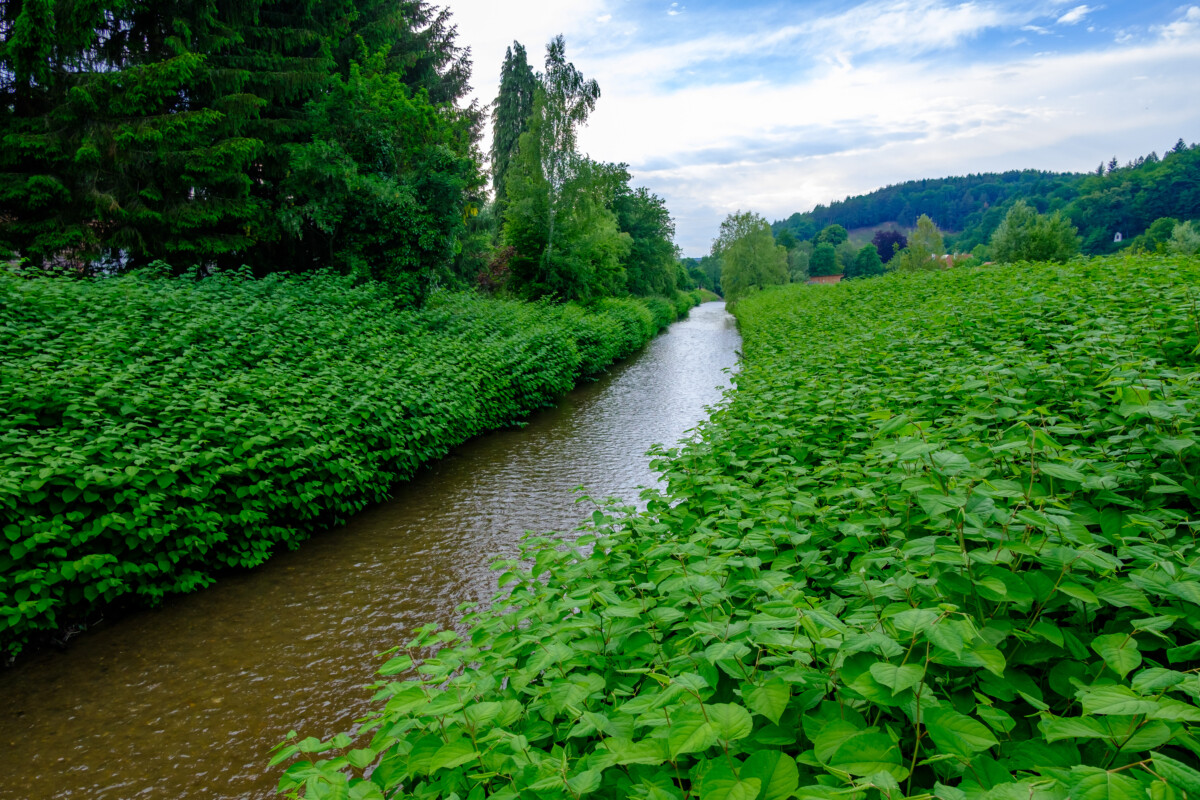
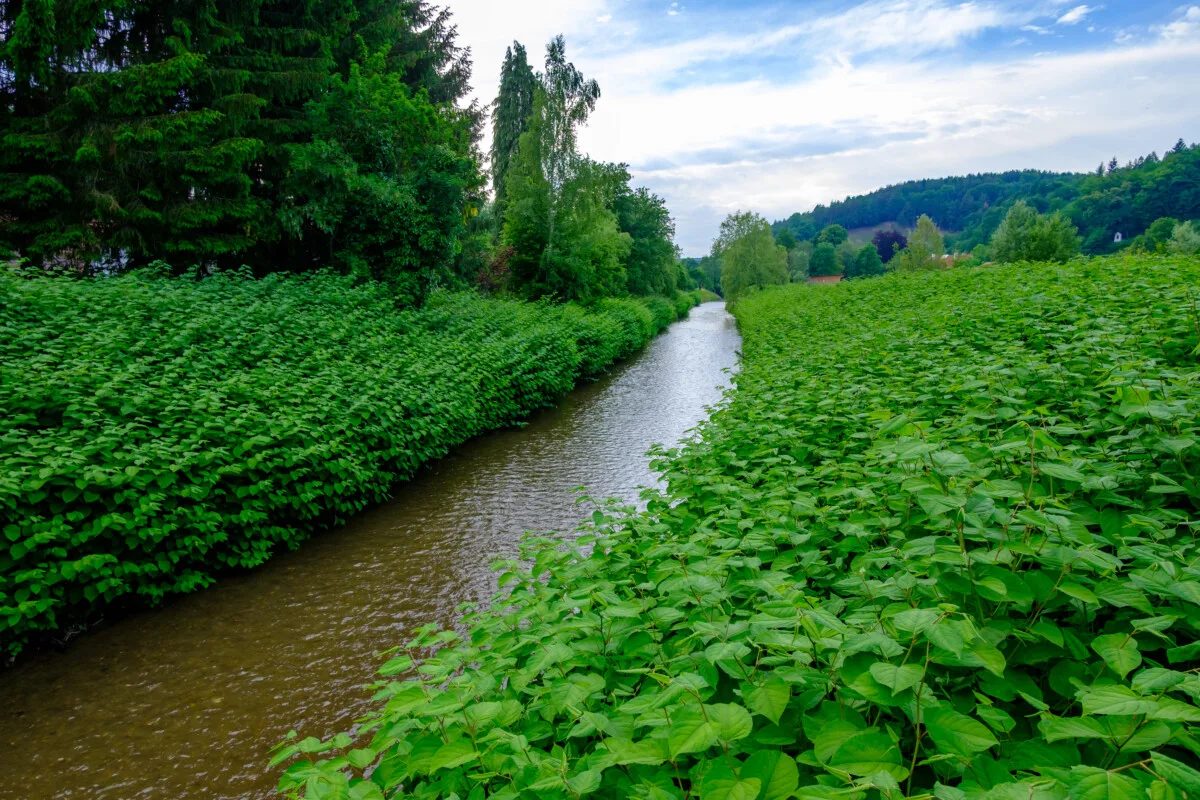
Japanese knotweed kinds thick leafy stands, rising as a lot as 3 inches every day and reaching as much as 10 ft in top by midsummer. It grows so quick and dense that it outcompetes native vegetation within the wilderness, with fewer invertebrates, amphibians, birds, and mammals present in locations that Japanese knotweed has colonized.
If it didn’t develop so aggressively, it could certainly be a good-looking shrub. The principle stalk appears to be like just like bamboo, hole and easy, about one inch in diameter, and is generally inexperienced with flecks of purple. The leaves are oval-shaped with pointed suggestions and run alternately down red-tinged stems that path gracefully from the stalk.
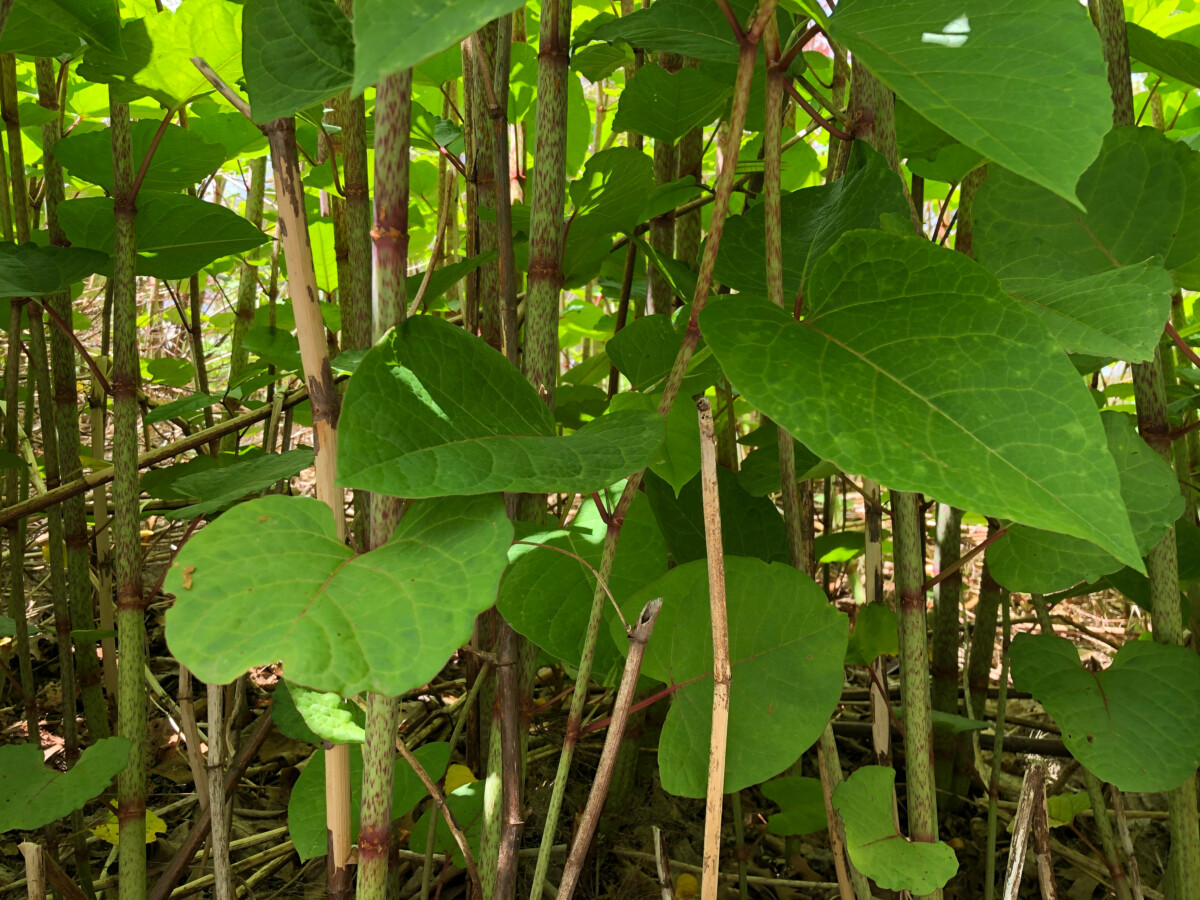
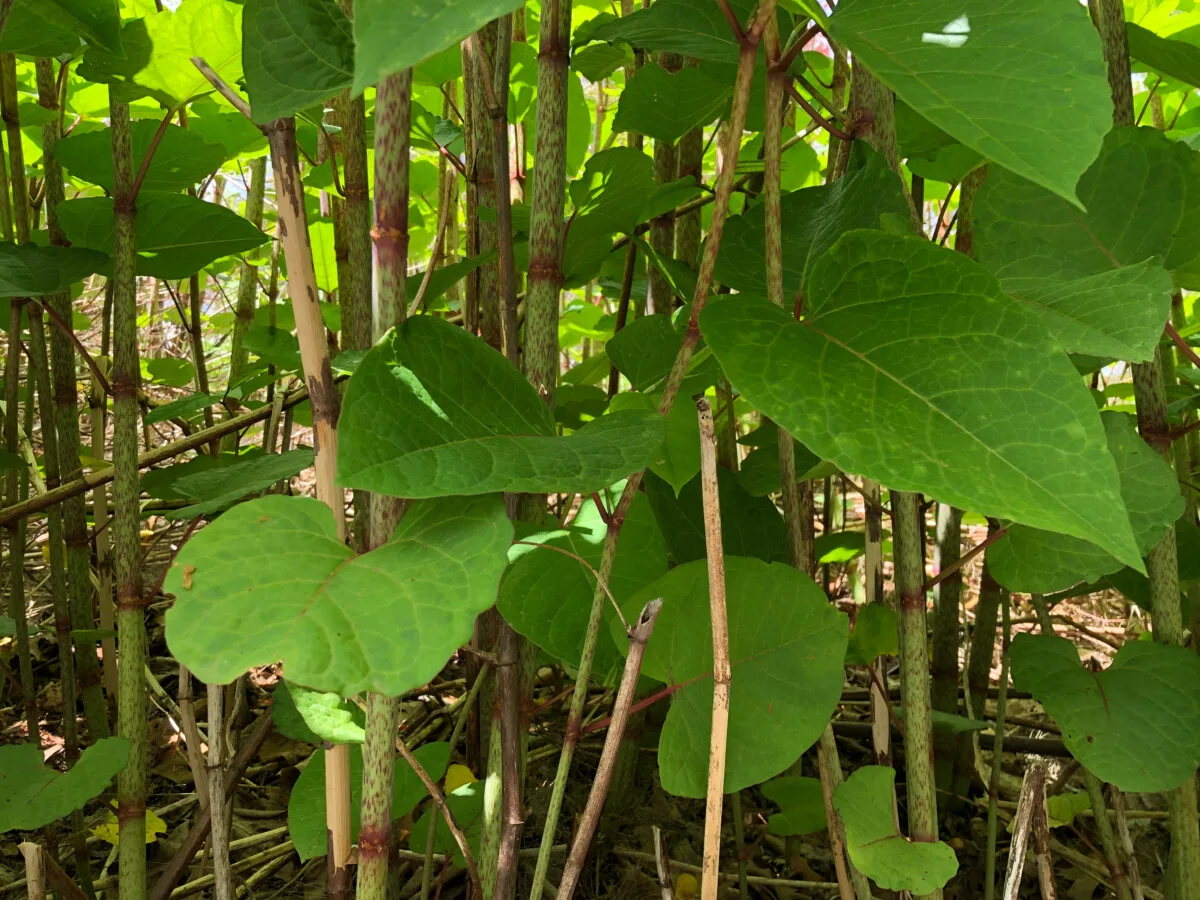
Small white flowers bloom in panicles in July or August, and resemble tiny variations of astilbe. As a dioecious plant, it requires female and male flowers to provide viable seed. A lot of the Japanese knotweed current in North America is believed to be sterile clones – nevertheless, the flowers may be pollinated by associated invasive vegetation, like large knotweed and bohemian knotweed.
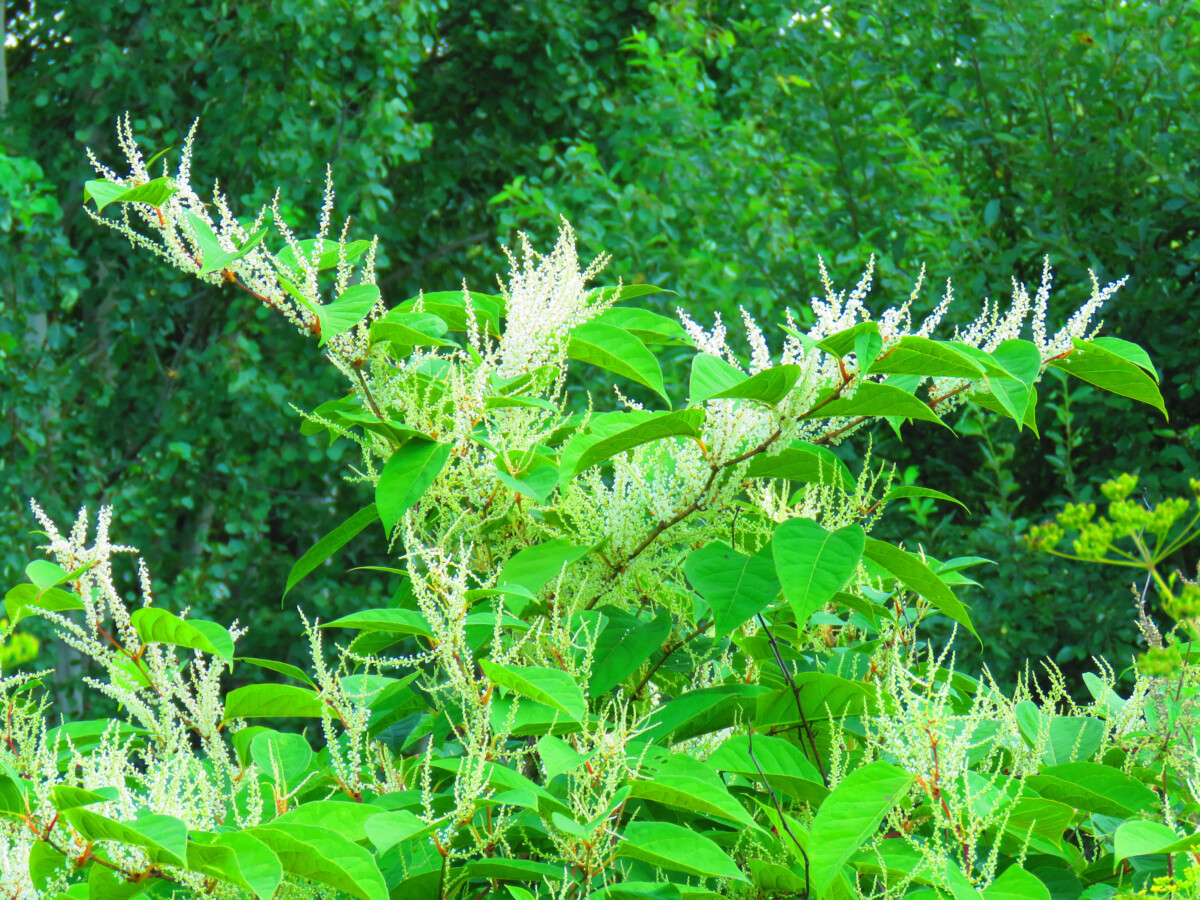
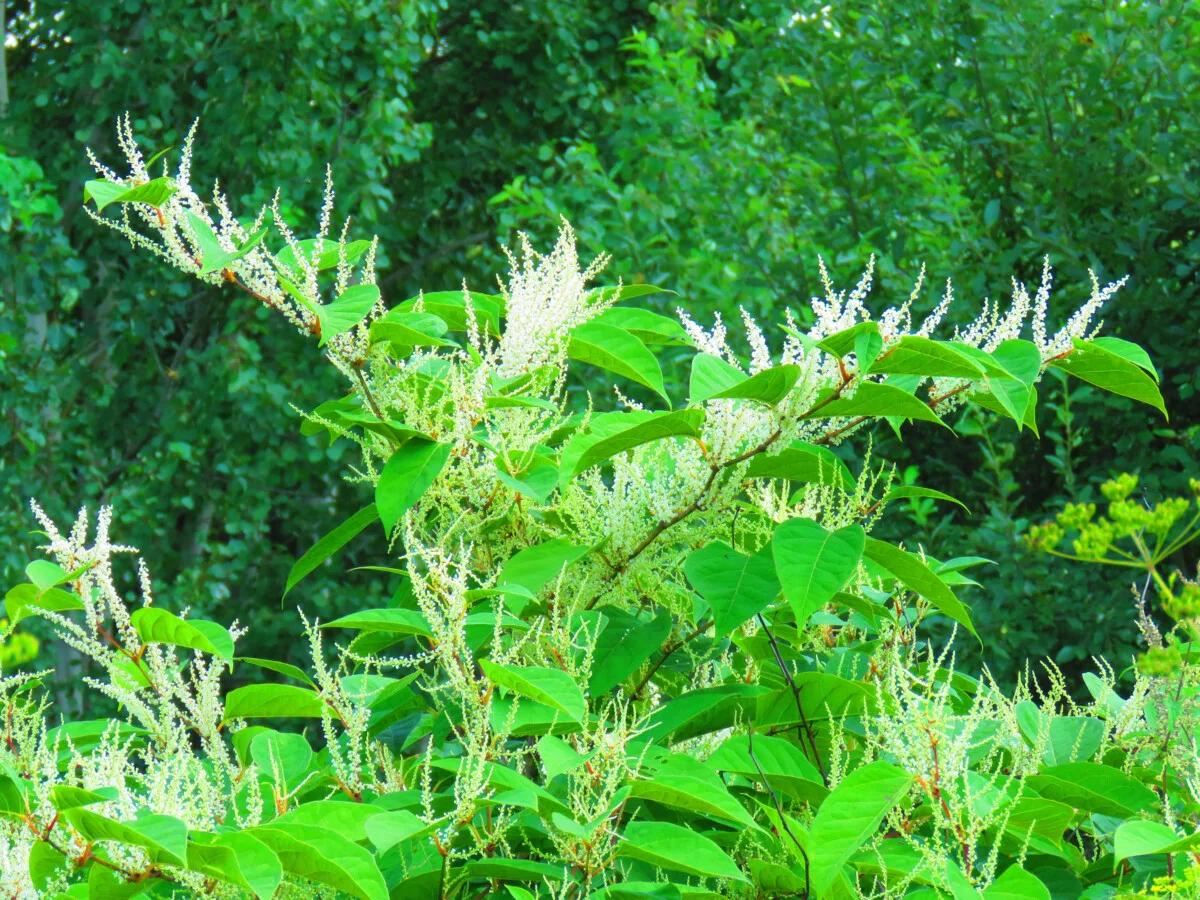
The ultra-fast development up high is only a fraction of what’s occurring beneath the floor.
The first means that Japanese knotweed spreads is thru its huge community of rhizomes. The underground root system accounts for two/3 of the plant’s whole mass.
The woody roots, darkish brown on the skin and vivid orange on the within, are ridiculously hardy. Rising by way of asphalt and concrete like butter, the roots can tunnel 6 ft deep and attain 65 ft or extra in size. Root fragments as small as 1 cm can spawn an entire new plant in solely 6 days.
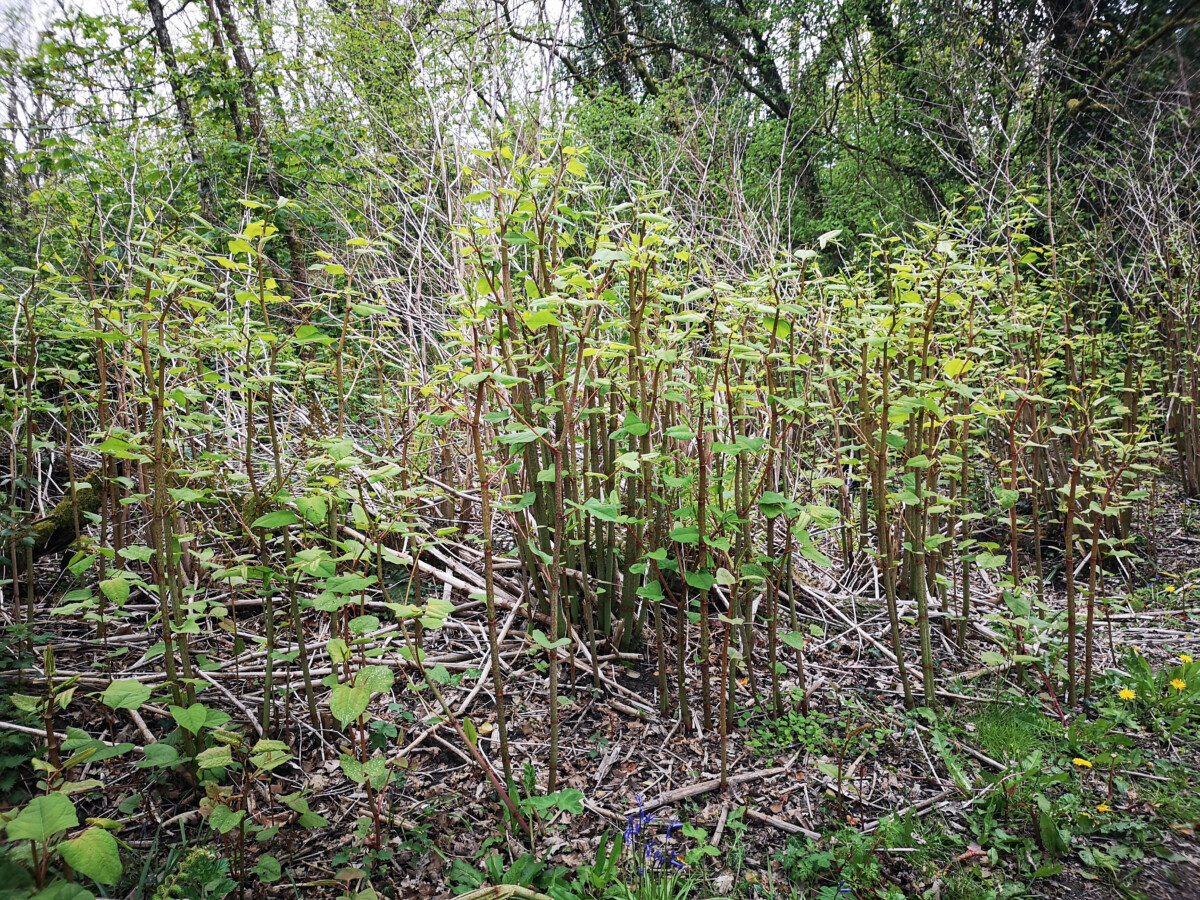
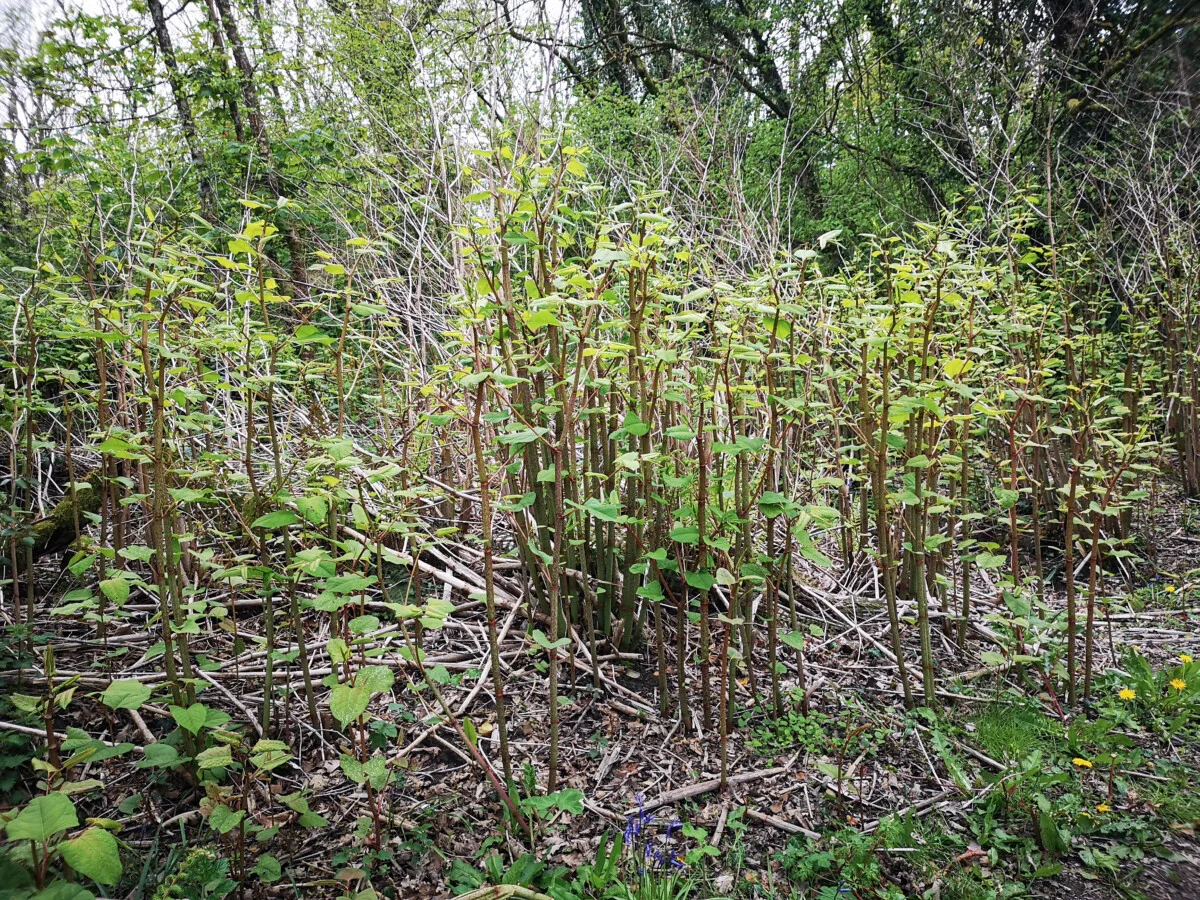
Japanese knotweed dies again every fall, leaving useless stalks standing over winter. The place one stalk overwinters, quite a few new shoots will emerge from the identical spot in spring. Because the dad or mum plant grows, it sends out a large number of underground runners that bear new shoots. The juvenile sprouts look just a little like asparagus, purplish and inexperienced, and push up mainly wherever and all over the place.
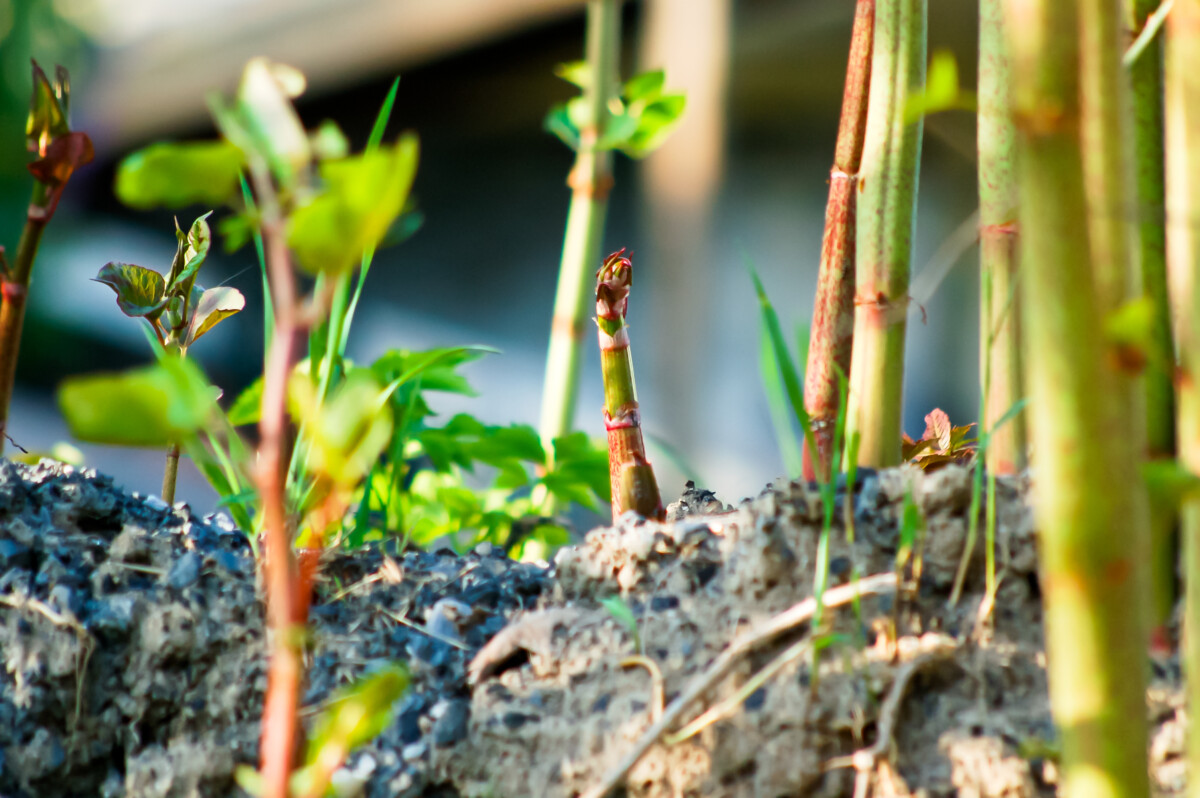
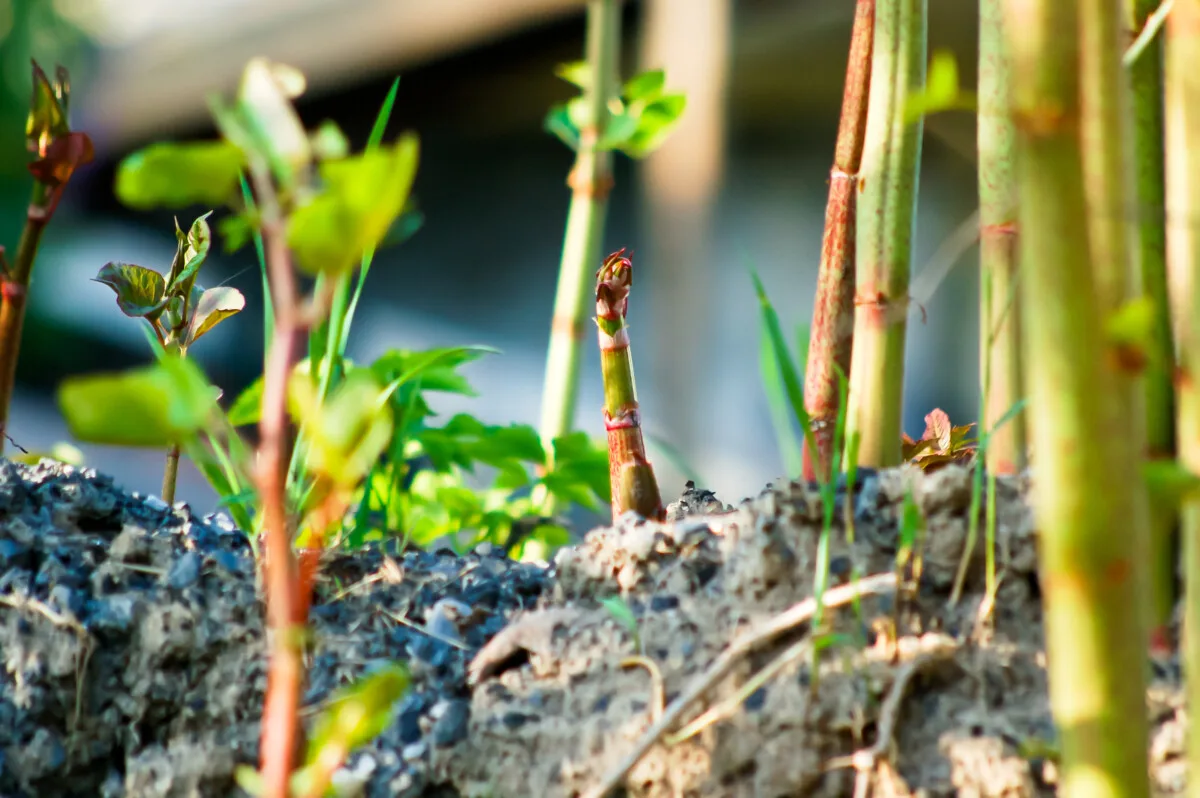
Controlling Japanese Knotweed – the 5 Yr Plan
To actually eradicate Japanese knotweed, you would want to take away the whole lot of its sprawling and interconnected root system. That is no small feat, as abandoning a little bit of root barely bigger than a quarter-inch is sufficient to reverse any progress you’ve made.
To this point, there’s just one confirmed technique to rapidly and successfully get rid of the basis mass: full-scale excavation. This entails digging pits 10 ft deep with heavy equipment and disposing of the contaminated soil prefer it’s hazardous waste. Not precisely doable in most suburban backyards!


We’re gonna want a much bigger spade!
Moderately than capturing for whole annihilation, your efforts to handle Japanese knotweed needs to be sluggish and regular.
A constant mixture of those management measures will deplete the rhizomes over time, leaving them with much less vitality to sprout new shoots. Solely do them as soon as, although, and Japanese knotweed will explode with renewed goal. It’ll take a dedication of a minimum of 5 years – and possibly as much as 10 for giant and well-established populations.
With Japanese knotweed, it will probably really feel such as you’re taking part in whack-a-mole. Focus your efforts first on containment. Take away the satellite tv for pc sprouts to stop unfold earlier than taking up the extra mature vegetation.
Slicing
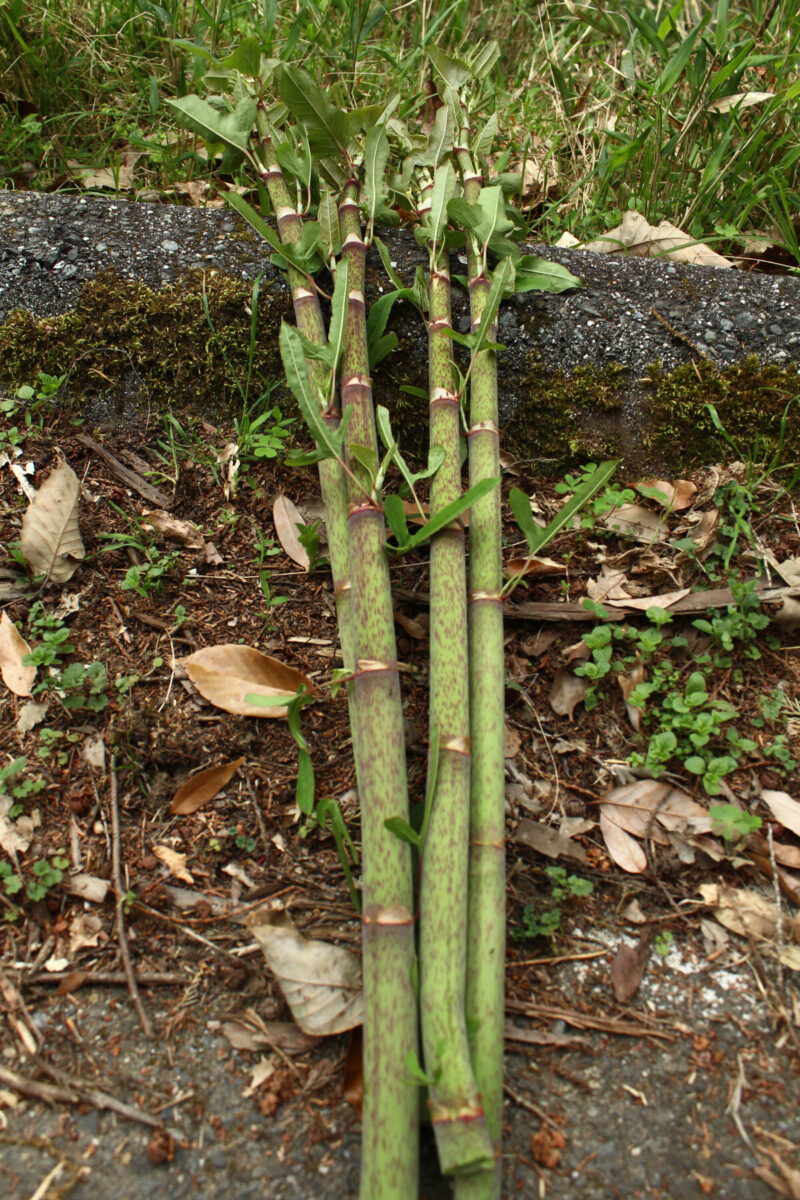
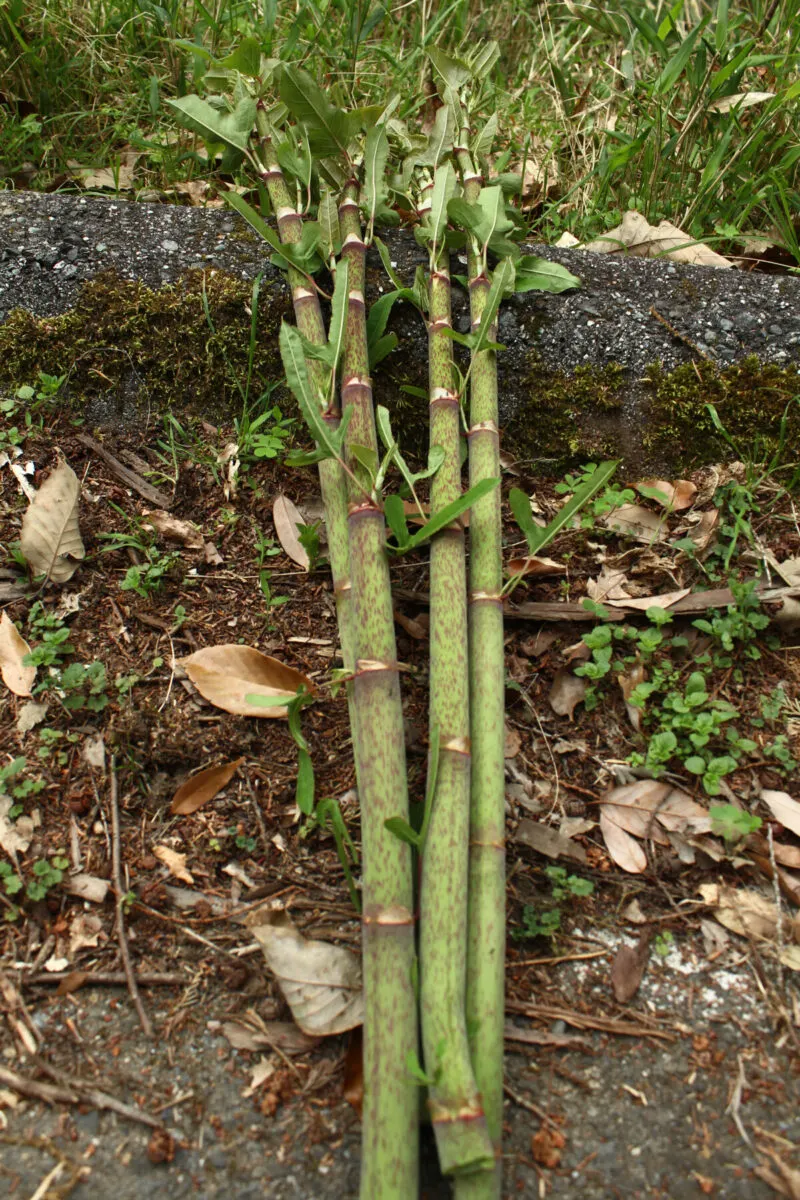
Slicing down vegetation as soon as will solely make them stronger. However persistently chopping down any and all Japanese knotweed development you see will, ever so slowly, weaken the rhizomes beneath.
It’s not an efficient technique by itself, however conserving sprouts and shoots minimize all the way down to floor degree is usually a good a part of your general Japanese knotweed technique.
Eradicating the above floor development received’t contact the roots, however it should scale back the plant’s vitality reserves. Freshly snipped vegetation will allocate their sources in direction of regrowth as an alternative of unfold. When the plant sprouts once more (and it’ll), its development will likely be stunted to three or 4 ft.
Each time you in the reduction of Japanese knotweed, you’re limiting the plant’s potential. It can take years of repeated cuttings to make a distinction, which is why it’s so vital to take a multi-pronged strategy.
Digging
Japanese knotweed is at all times encroaching. When it’s blissful, it sends out runners that radiate out from the dad or mum plant like spokes on a wheel. Each new sprout has the potential to do the identical – so you possibly can simply think about the exponential development!
The most recent clones, freshly risen from the soil for the primary time, have small rhizomes which are the simplest to take away. These younger roots will likely be linked to barely older and bigger rhizomes, which in flip are linked to even bigger ones. You possibly can comply with the runners, digging up root clumps as you go.
Take further care when digging up the roots. Maintain the rhizomes entire as a lot as attainable and depart no bits of root behind.
When the roots go too deep into the soil, sever the connecting runner cleanly with loppers. At this level, I might dump boiling scorching water into the outlet for good measure. This further step appeared to assist cease the rhizomes from rapidly rebounding with contemporary development.
Tarping
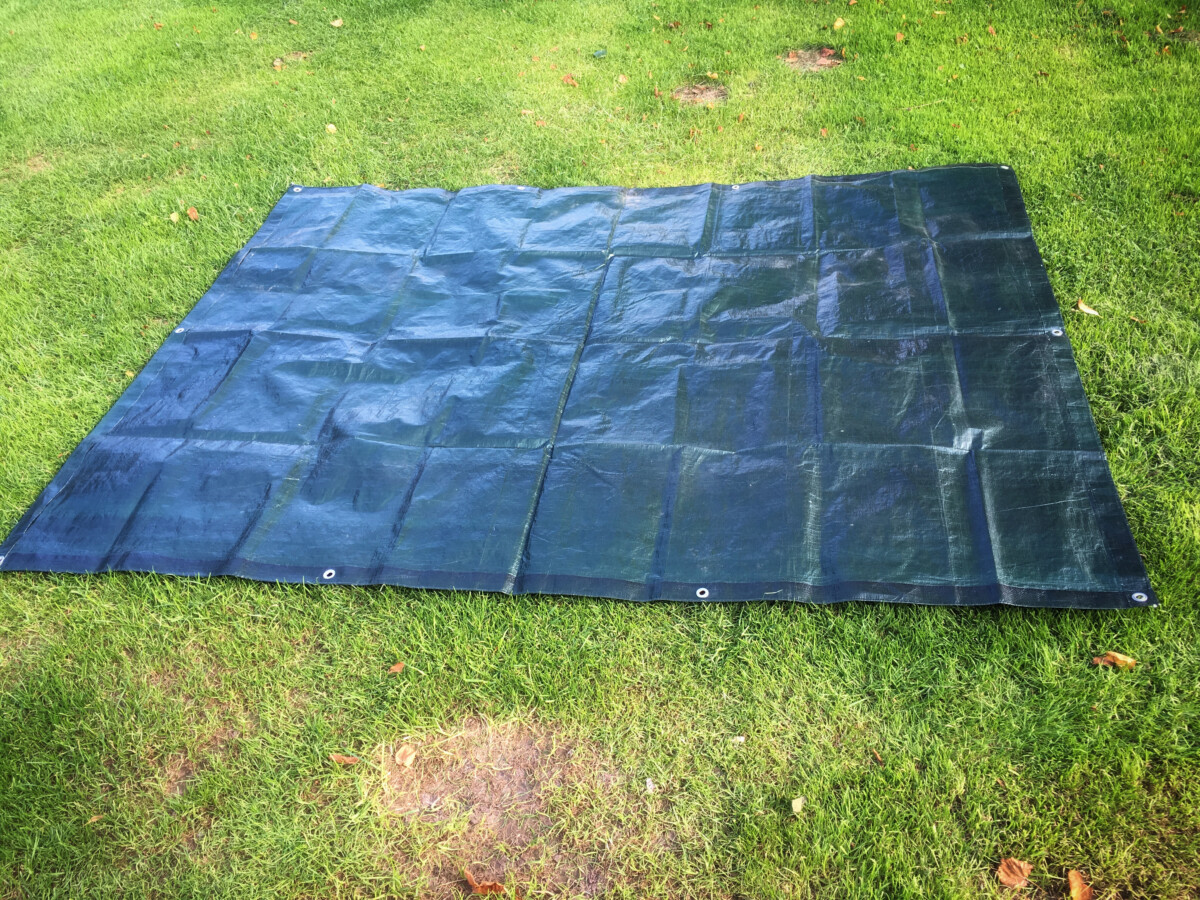
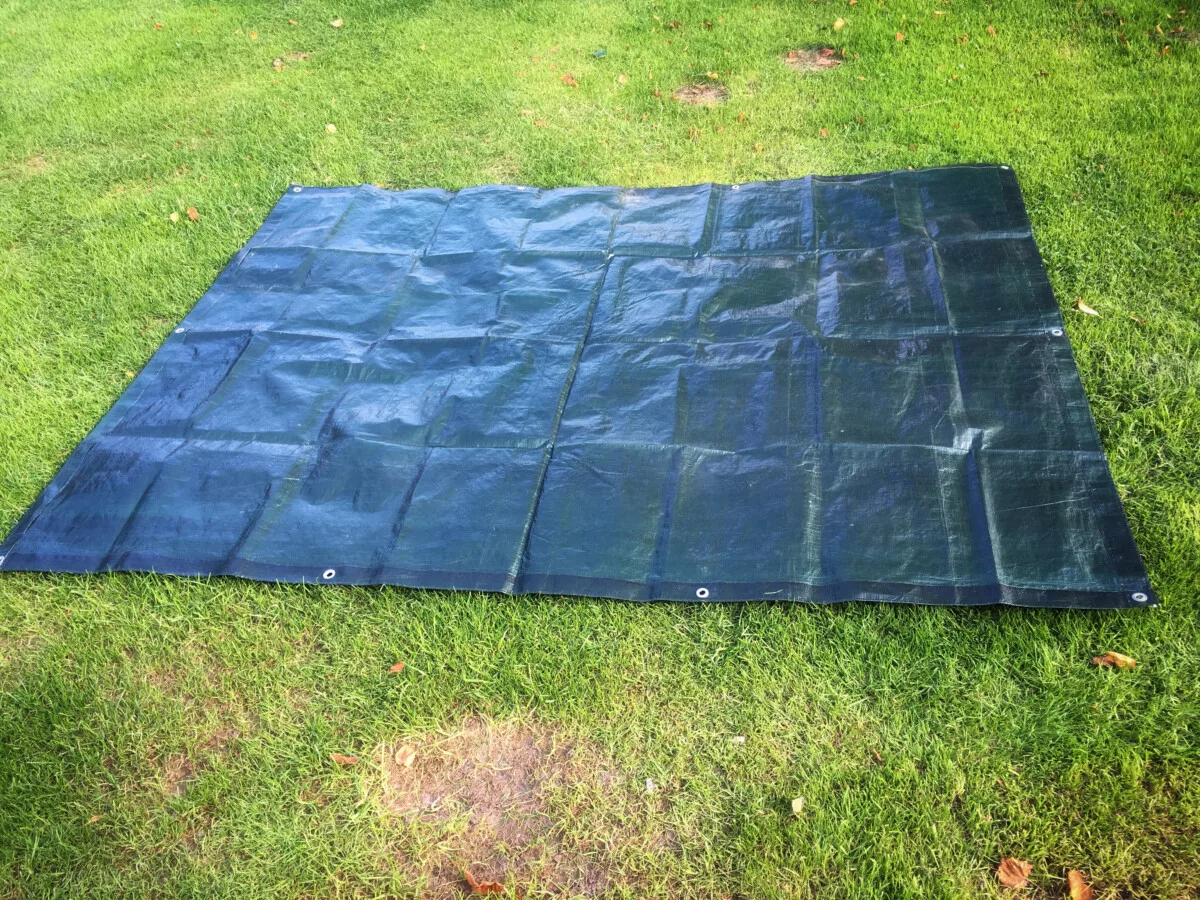
The older the roots of Japanese knotweed, the thicker and woodier they turn out to be. Virtually like tree roots, they don’t come up readily. When your Japanese knotweed has been there awhile, or has fashioned dense clusters of vegetation, soil solarization is a extra sensible possibility than digging.
Tarping over the infested websites will concurrently block out daylight and prepare dinner the basis system. It really works greatest in sunny places so the soil will warmth up sufficient to kill the rhizomes.
Begin tarping Japanese knotweed in late spring. Minimize all of the stalks all the way down to the soil line and canopy the rising website with a dark-colored, heavy-duty tarp. The duvet needs to be considerably bigger than the colony itself to stop shoots from rising laterally to seek out the sunshine.
Japanese knotweed sprouts have been recognized to punch by way of a tarp so be sure to lay the quilt over the soil loosely. Leaving an inch or two of slack, crush the corners and edges with rocks or tent pegs to cease the tarp from blowing away.
For solarization to work towards Japanese knotweed, you’ll want to go away the tarp in place for a minimum of 3 rising seasons. As you wait, maintain monitoring the location and take away any shoots that poke out previous the perimeters. Test for tears within the sheet and patch them up instantly in order that the roots don’t acquire any profit from gentle and air circulation.
Remediating the Soil
Solarizing Japanese knotweed rising websites for 3 years can have the unlucky aspect impact of destroying all of the helpful microbes within the soil too. And as if this plant wasn’t overpowered sufficient, it exudes chemical compounds from its roots that makes the soil much less hospitable to different flora.
As soon as an space has been cleared of Japanese knotweed, you’ll want to repair the soil and make it into a spot the place vegetation need to be.
Re-introduce good soil microbiota by deeply mulching the location. Use natural matter like leaf mildew or wooden chips to provide the micro organism and fungi the gasoline they should develop and multiply.
It’s additionally a good suggestion to closely replant the world to suppress Japanese knotweed (and different undesirable weeds) from sprouting. Crowd the house with native vegetation which have thick, deep, and dense roots. Wildflowers like black-eyed Susan, purple coneflower, sunchoke, goldenrod, and butterfly weed are pretty, hardy vegetation with massive and strong root techniques.
Safely Disposing Japanese Knotweed
As you narrow and dig away on the drawback of Japanese knotweed, you’ll accumulate heaps of leafy branches, stems, and rhizomes. Don’t compost any a part of Japanese knotweed, ever.
Deal with it just like the biohazard it’s by inserting all plant supplies in thick black plastic baggage. Seal the baggage up tightly and depart them in full solar for two weeks. When the contents are completely dried, you possibly can burn them or put the baggage out with the trash.
Accepting that Japanese Knotweed is Right here to Keep
Japanese knotweed is so vigorous and considerable that it’s fairly nicely unmatched within the weed division. The plant’s drive to outlive is sort of admirable, actually.
I finally got here round to the concept that I would want to be taught to dwell alongside my patch of Japanese knotweed. Regardless of all of the pulling, slicing, and digging, it at all times got here again. My efforts to manage it weren’t fully in useless although. With consistency and persistence, its occupancy of my rising areas turned much less and fewer over time
There may be one silver lining with Japanese knotweed – it’s free meals.
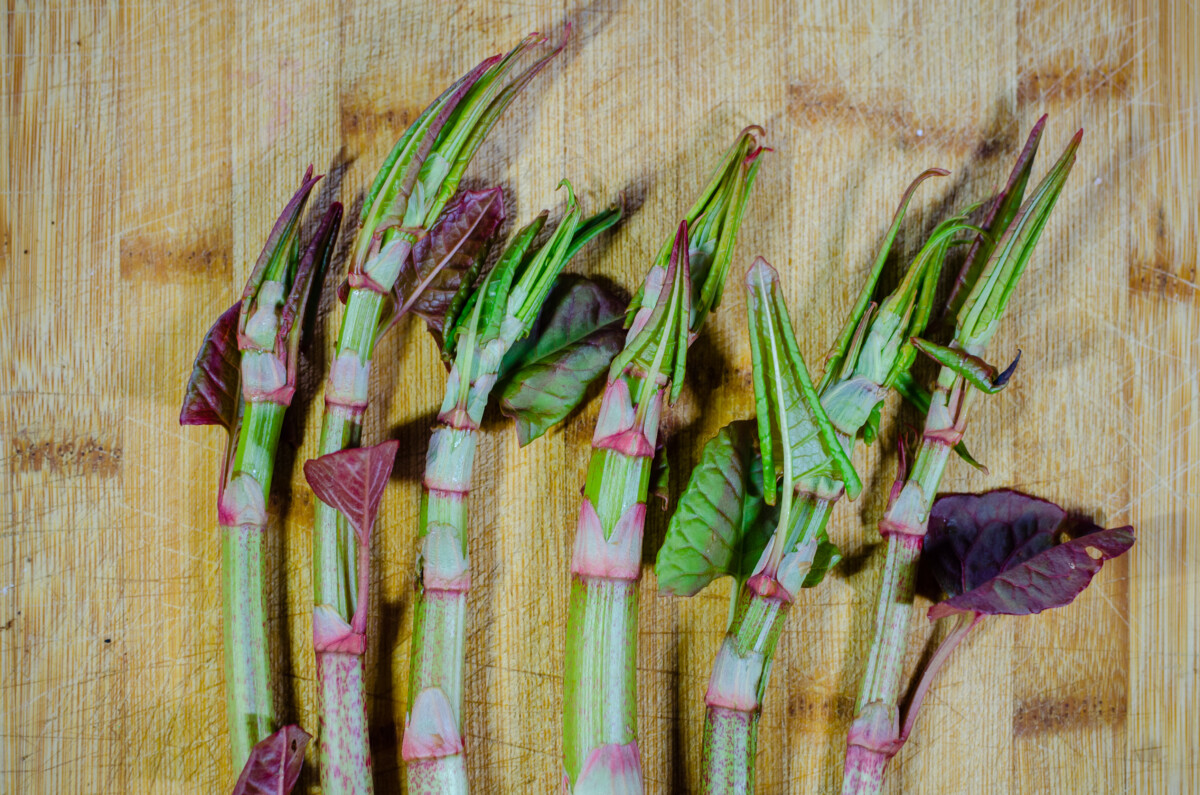
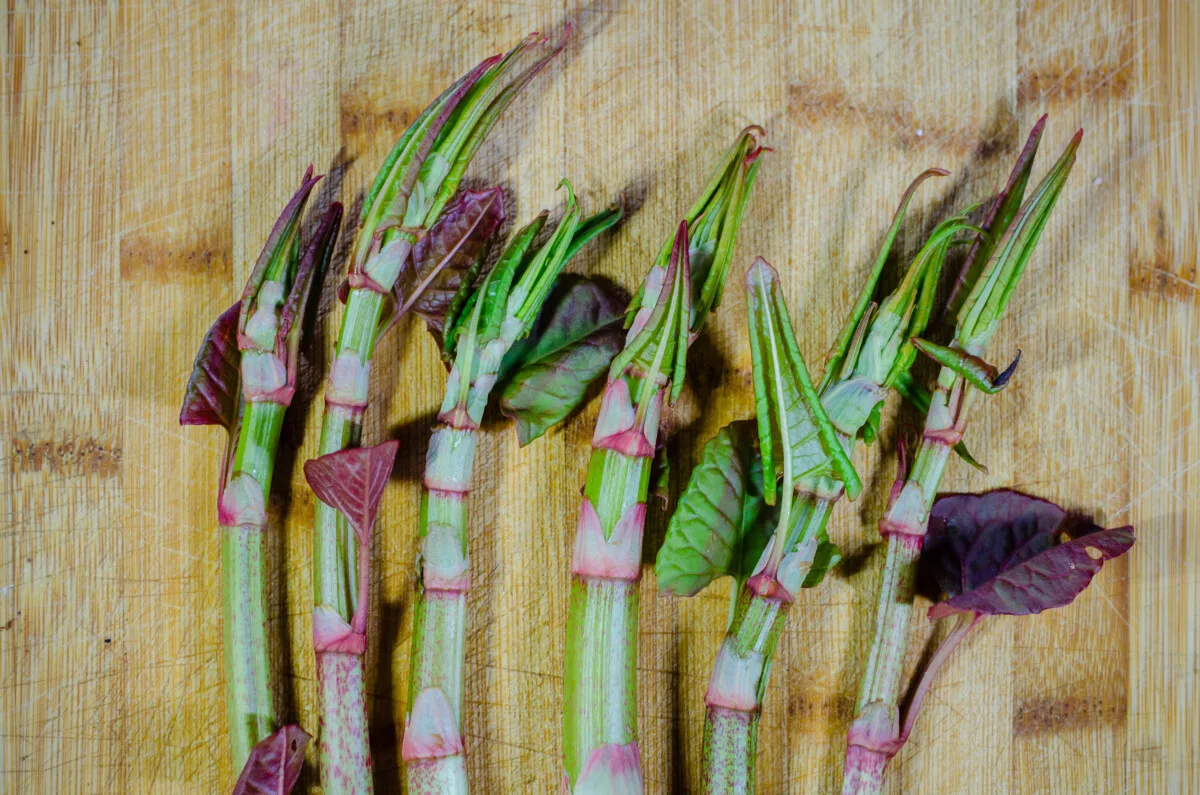
The juvenile sprouts, the hollows stalks, and the inexperienced leaves are all completely edible. Nutritious, even, for the reason that plant is kind of wealthy in resveratrol and different antioxidants.
Japanese knotweed has tartness just like rhubarb, imparting a lemony taste to foods and drinks. The youngest shoots that pop up in early spring are essentially the most tender. Older stalks, taller than a foot, have a more durable outer pores and skin that may be scraped off with a peeler. Both younger or previous, Japanese knotweed may be loved uncooked, sautéed, grilled, pickled, and sweetened.
So when you possibly can’t beat ‘em, eat ‘em:

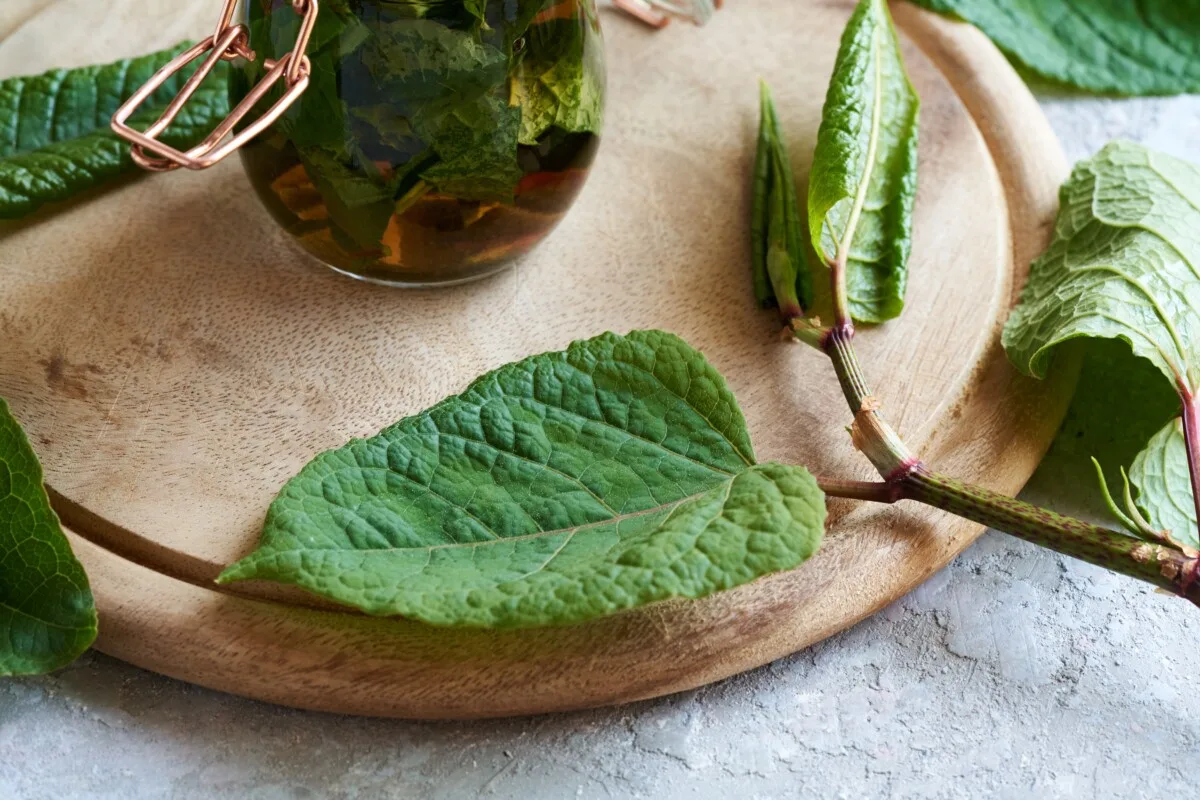

Get the well-known Rural Sprout e-newsletter delivered to your inbox.
Together with Sunday ramblings from our editor, Tracey, in addition to “What’s Up Wednesday” our roundup of what’s in season and new article updates and alerts.
